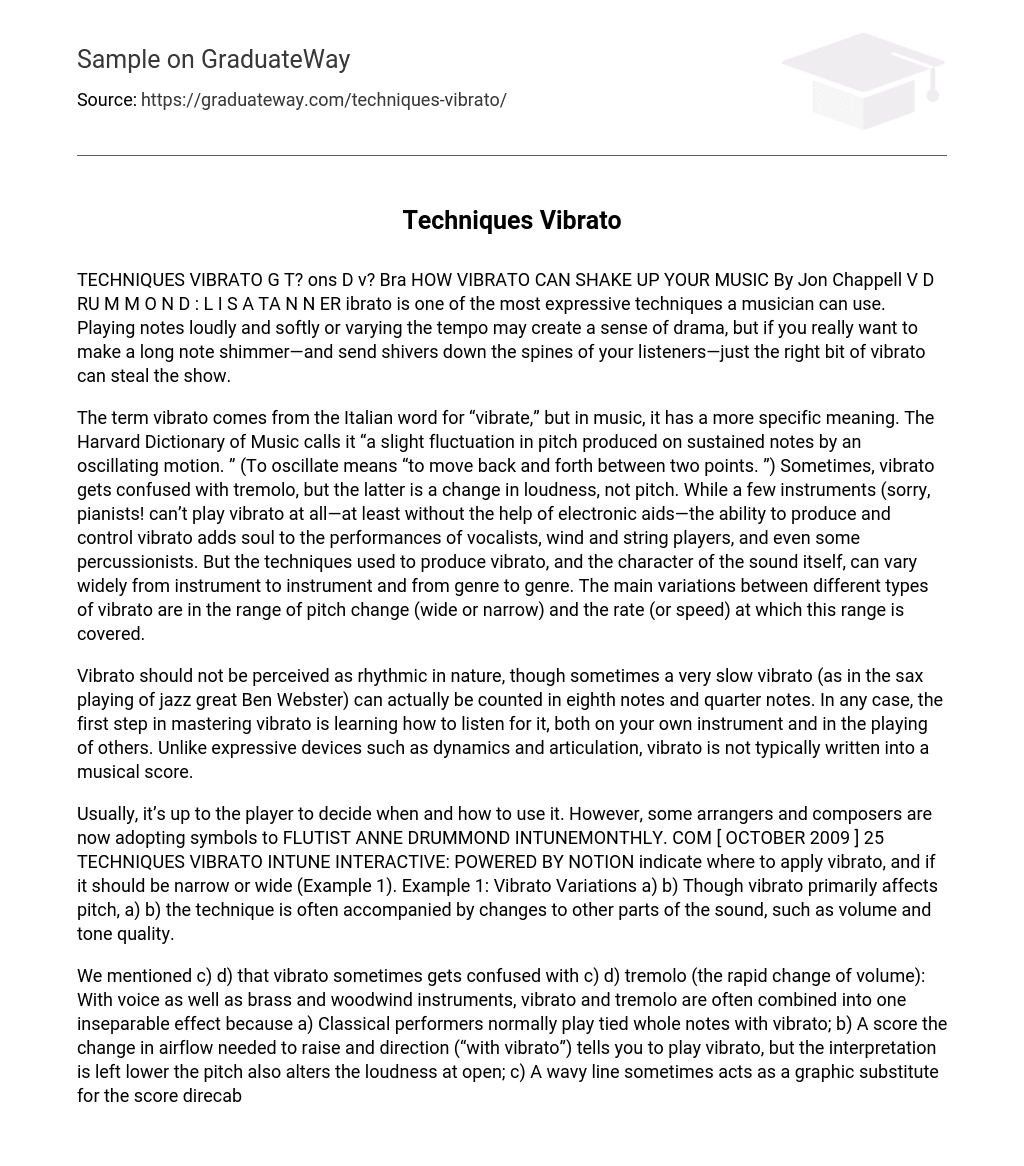Vibrato is one of the most expressive techniques a musician can use. Playing notes loudly and softly or varying the tempo may create a sense of drama, but if you really want to make a long note shimmer—and send shivers down the spines of your listeners—just the right bit of vibrato can steal the show.
The term vibrato comes from the Italian word for “vibrate,” but in music, it has a more specific meaning. The Harvard Dictionary of Music calls it “a slight fluctuation in pitch produced on sustained notes by an oscillating motion. ” (To oscillate means “to move back and forth between two points. ”)
Sometimes, vibrato gets confused with tremolo, but the latter is a change in loudness, not pitch. While a few instruments (sorry, pianists! can’t play vibrato at all—at least without the help of electronic aids—the ability to produce and control vibrato adds soul to the performances of vocalists, wind and string players, and even some percussionists. But the techniques used to produce vibrato, and the character of the sound itself, can vary widely from instrument to instrument and from genre to genre. The main variations between different types of vibrato are in the range of pitch change (wide or narrow) and the rate (or speed) at which this range is covered.
Vibrato should not be perceived as rhythmic in nature, though sometimes a very slow vibrato (as in the sax playing of jazz great Ben Webster) can actually be counted in eighth notes and quarter notes. In any case, the first step in mastering vibrato is learning how to listen for it, both on your own instrument and in the playing of others. Unlike expressive devices such as dynamics and articulation, vibrato is not typically written into a musical score.
In Tune and Notion Music (notionmusic. com) are teaming up to make our online music examples more student- and teacher-friendly than ever before! Log on to InTuneMonthly. com to hear the music examples shown here. dramatic than vocal vibrato. In fact, this is the effect that many instrumentalists are trying to emulate with their playing. I like to use the innate vibrato of a singer as a model to learn from,” says flutist and keyboardist Anne Drummond, a rising star on the jazz scene who’s also toured with rock band Bright Eyes. “A vocalist’s vibrato tends to be natural and personal. ”
Every musician can experiment with vibrato by using his or her voice. Try singing a long note, and then raise and lower the pitch in a regular cycle. Vary the speed of the cycle, but keep the pitch change slight, so that it still sounds like you’re holding one note, not singing a phrase.
While some voice teachers feel that natural changes in airflow control singing vibrato, Jeannette LoVetri, a New York City–based singer, vocal coach, and director of The Voice Workshop, contends that vibrato occurs in the vocal cords. “Contrary to popular belief, vibrato doesn’t have much to do with breath support,” she says. “Vibrato is generated at the level of the vocal folds themselves, which control the airflow. ” These can be controlled by contracting and releasing tiny muscles in the throat.
A teacher or vocal coach can help you develop your vibrato. The style and speed of vocal vibrato can vary by musical genre. “Mainstream classical vocalists are expected to have vibrato that is generally agreed to be between 5. 5 to 6. 5 cycles [oscillations] per second and between a quarter to a half tone above and below the pitch being sustained,” LoVetri says.
On bowed strings like violin, viola, cello, and double bass, the performer plants a left-hand finger on a string and rolls back and forth on the fingertip, using the wrist to move the hand forward and back. This motion changes the vibrating length of the string, which alters the pitch slightly. Usually, string layers rock the hand from behind the fingertip, which means their brand of vibrato sees the note go slightly flat and then brought back up to pitch. With fretted string instruments such as the guitar, electric bass, banjo, and mandolin, the left-hand finger is also rocked in a rapid motion.
Since stretching a string raises the pitch, a guitar player’s vibrato alternates between the principal pitch and a higher one. An important exception is when a guitarist bends up to a note first: a skilled player can push and pull the string to both raise and lower the pitch. Some electric guitars are equipped with specially designed vibrato bridges that float on springs (sometimes incorrectly called tremolo bridges); guitarists use an arm attached to the bridge to raise and lower the strings’ pitch. This lets them apply vibrato to complete chords as well as single notes.





